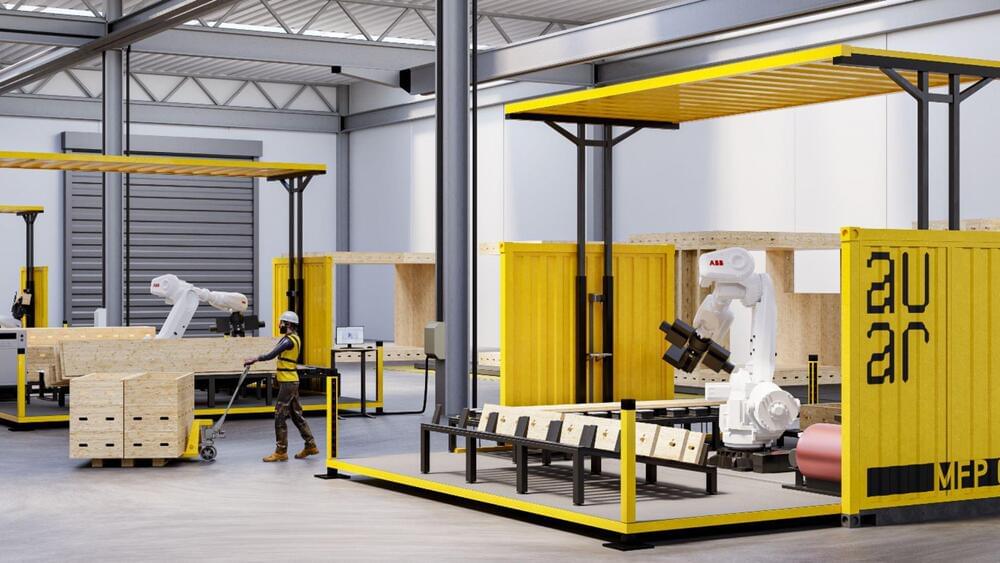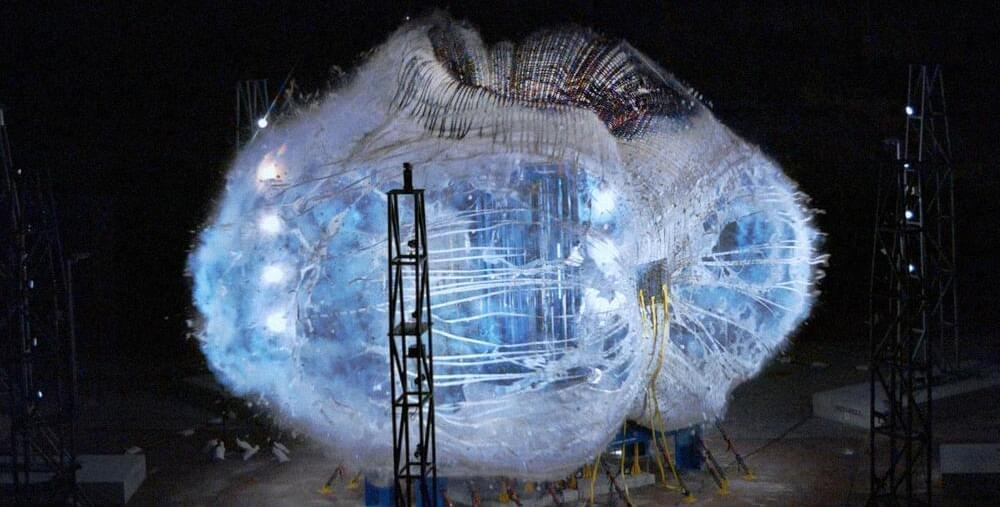Apr 3, 2024
MIT researchers discover “neutronic molecules”
Posted by Dan Breeden in category: habitats
MIT Department of Physics.
77 Massachusetts Avenue.
Building 4, Room 304
Continue reading “MIT researchers discover ‘neutronic molecules’” »
MIT Department of Physics.
77 Massachusetts Avenue.
Building 4, Room 304
Continue reading “MIT researchers discover ‘neutronic molecules’” »

While during Apollo 13 the phrase “Failure is Not an Option” was coined, in life and especially for students, failure must be an option for growth. In this talk, Michelle Lucas encourages failing forward. Michelle Lucas was raised in the Chicagoland area and found a passion for space very early in her life. She studied Aerospace Engineering, Communications & Space Studies at Purdue University and Embry Riddle Aeronautical University. During this time she conducted microgravity fluids research on NASA’s KC-135 aircraft and also worked as a counselor at Space Camp in Florida. After graduation from college, Michelle spent 11 years working at NASA’s Johnson Space Center. She began on the Safety Reliability & Quality Assurance Contract as part of the Payload Safety Review Panel for experiments flying to the International Space Station. After this she worked as a Flight Controller in Mission Control for the International Space Station for the Ops Plan Group and as a Astronaut Technical Instructor in the Daily Operations Group. Additionally she worked with each of the International Partners (European Space Agency – ESA, Japanese Space Agency – JAXA and the Russian Space Agency) in the field of Daily Operations, Flight Controller and Instructor Training. Michelle was responsible for the basic instructional training of all technical instructors for in the US as well as for the ISS International Partners. Michelle was part of the Core NASA Extreme Environment Mission Operations (NEEMO) team for 9 missions where astronauts would carry out analog space missions underwater in the Aquarius habitat. Along the way, Michelle found she has a passion for exciting the next generation and founded the non-profit Higher Orbits to use space to excite and inspire students about STEM, STEAM, Leadership, Teambuilding and Communication. Higher Orbits flagship program is called Go For Launch! This program allows students work with an astronaut and other accomplished individuals in the fields of Space, STEM and STEAM. Additionally, Michelle and a business partner run uniphi space agency – a talent management company for retired astronauts. Michelle is proud to be a Space Camp Alumni and member of the Space Camp Hall of Fame and believes that collaboration in space and STEM is the key to the stars! Space Inspires! This talk was given at a TEDx event using the TED conference format but independently organized by a local community.
A new approach to monitoring arachnid behavior could help understand their social dynamics, as well as their habitat’s health.
Building on experiments during October’s partial solar eclipse in the U.S, NASA has a once-in-400 years opportunity to study how an eclipse affects Earth’s atmosphere.
A recent study reveals how hydrogen gas, often touted as the energy source of tomorrow, provided energy in the past, at the origin of life 4 billion years ago. Hydrogen gas is clean fuel. It burns with oxygen in the air to provide energy with no CO2.
Hydrogen is a key to sustainable energy for the future. Though humans are just now coming to realize the benefits of hydrogen gas (H2 in chemical shorthand), microbes have known that H2 is a good fuel for as long as there has been life on Earth. Hydrogen is ancient energy.
The very first cells on Earth lived from H2 produced in hydrothermal vents, using the reaction of H2 with CO2 to make the molecules of life. Microbes that thrive from the reaction of H2 and CO2 can live in total darkness, inhabiting spooky, primordial habitats like deep-sea hydrothermal vents or hot rock formations deep within the Earth’s crust, environments where many scientists think that life itself arose.

UK-based construction technology firm Automated Architecture (AUAR) has bagged $3.2 million in funding to advance its mission to automate the construction process to solve housing-related issues.
AUAR is creating a network of dispersed micro-factories for environmentally friendly timber homes. AUAR claims that it presents an alternative vision for the built environment, in which local ecosystems comprising developers, contractors, architects, and communities are empowered to construct better homes instead of centralized automation in massive factories.
This apparent paradox has a simple yet surprising explanation, according to Meredith Whitney: Employers are finally exacting revenge on remote workers who’ve secretly had a second job.
The veteran researcher, who became known as the “Oracle of Wall Street” for her early warnings about banks before the financial crisis, is no stranger to thinking outside the box about everything from the housing market to the economy, and this theory is no exception.
But there’s evidence to support Whitney’s thesis that many of the job cuts made have been to remote positions that were filled by people working at multiple companies under the radar.
The software development sector stands at the dawn of a transformation powered by artificial intelligence (AI), where AI agents perform development tasks. This transformation is not just about incremental enhancements but a radical reimagining of how software engineering tasks are approached, executed, and delivered. Central to this shift is introducing AI-driven frameworks that transcend traditional code assistance tools, marking a leap toward more autonomous, efficient, and secure software development methodologies.
The integration of AI in software development has been confined largely to providing code suggestions and aiding in file manipulation. This approach, while beneficial, barely scratches the surface of what is technologically feasible. AI-powered tools operate within a constrained scope, missing out on Integrated Development Environments (IDEs)’ vast capabilities, such as comprehensive code building, testing, and version control operations. This limitation underscores a critical gap in the software development toolkit, where the potential for AI to contribute more profoundly to the development lifecycle remains largely untapped.
Microsoft researchers present AutoDev, which empowers AI agents to tackle a broad spectrum of software engineering tasks autonomously, from intricate code editing and comprehensive testing to advanced git operations. This framework is designed to focus on autonomy, efficiency, and security. By housing operations within Docker containers, AutoDev ensures that development processes are streamlined and secure, safeguarding user privacy and project integrity through meticulously designed guardrails.

Private space company Sierra Space has blown up its first full-scale inflatable space habitat, dubbed the Large Integrated Flexible Environment (LIFE) — and it was all part of the plan.
The balloon-like contraption, which measured just over 20 feet tall, held a third of the volume of the International Space Station once fully inflated. During a recent test, engineers at the Colorado-based company kept pumping it with air, reaching a whopping 77 psi — well above NASA’s recommended level of 60.8 psi — before it exploded in spectacular fashion.
Continue reading “Full-Scale Prototype Space Habitat Explodes Under Pressure” »
